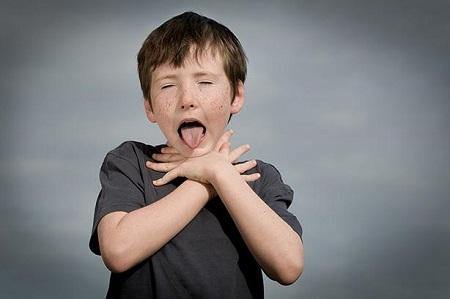
No matter how much we baby-proof our homes and no matter how closely we watch our children while they eat, the risk of choking never truly disappears. That fact can be scary, but parents can find peace of mind in being prepared.
Here, we explain how to recognize when your young child, newborn, or toddler is choking, what to do and what not to do in case of such an emergency. We also talk about our innovative anti-choking device called the Dechoker and why we believe it should be a part of every family’s first-aid kit.
Choking prevention is an important goal for families to work toward. Although some household hazards should always be cleaned up, the most common thing kids choke on is food. Hot dogs, grapes, peanut butter and hard candies are frequent hazards. To help prevent a child from choking, be very careful about portion sizes with those foods and others. Ultimately, the most important key is to watch your children closely while they eat.
If you suspect a child may be choking and he or she is coughing or gagging, that likely means the airway is partially blocked. Continue to let the child cough for a couple of moments before you intervene, as the coughing may help dislodge the item. If, on the other hand, a child is suddenly unable to speak, cough or cry, the child’s airway may be completely blocked, and you need to step in right away. Remember also that very young children are unlikely to signal to you that they are choking, as an adult would.
If you believe your baby or toddler is choking, administering first aid quickly is critical. Brain damage can occur after four minutes without oxygen, so you need to act fast. The first step is having someone call 911. Then you need to take action yourself while you wait for them to arrive.
Depending on the child’s age, abdominal thrusts, chest thrusts and back blows are commonly used techniques to dislodge food and other items from the airway. Although these maneuvers can be effective for trained professionals, they also come with the risk of injuring the choking victim, particularly young babies and toddlers. In addition to learning these techniques, we recommend every family with babies and toddlers keep a lifesaving Dechoker device nearby in an easily accessible first-aid kit.
The Dechoker comes in different sizes for toddlers and children ages 3 to 12 (an adult size is also available for anyone over 12). The Dechoker has a tube that goes down the child’s throat and a facemask that covers the nose and mouth. Simply insert the tube and hold the facemask in place while pulling back on the plunger, which uses suction to dislodge the stuck object. In many cases, the Dechoker clears the airway within seconds.
Although thinking about these emergencies can be tough, planning for them can make all the difference. Having the right tools in your first-aid kit can also bring you peace of mind and improve your family’s well-being. Learn more about the life-saving Dechoker anti-choking devices here.
Sign up to get the latest on life-saving articles, news releases, and more…
The Dechoker® airway clearing device can be used for choking emergencies on anyone 12 months old and up. Dechoker® recommends first action Red Cross/AHA protocol. If this fails continue CPR, and use the Dechoker®.